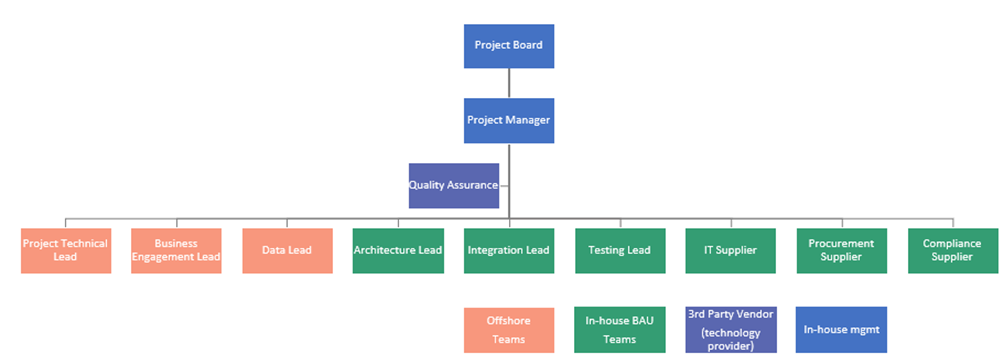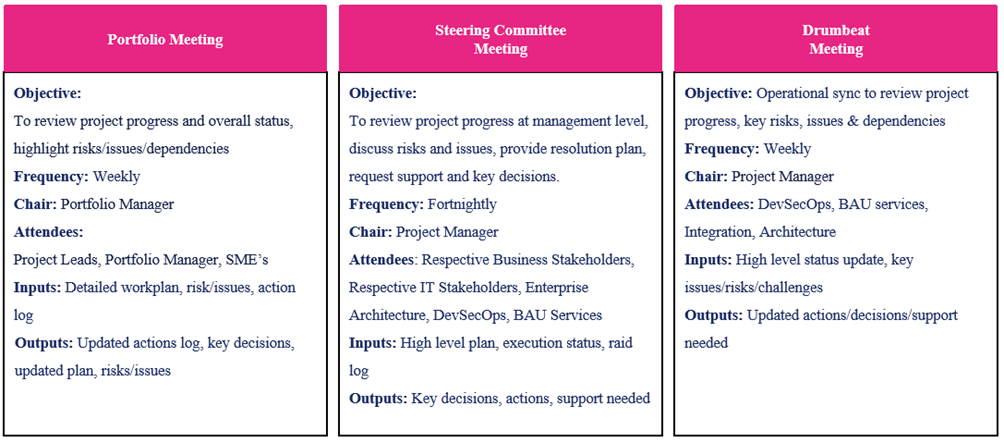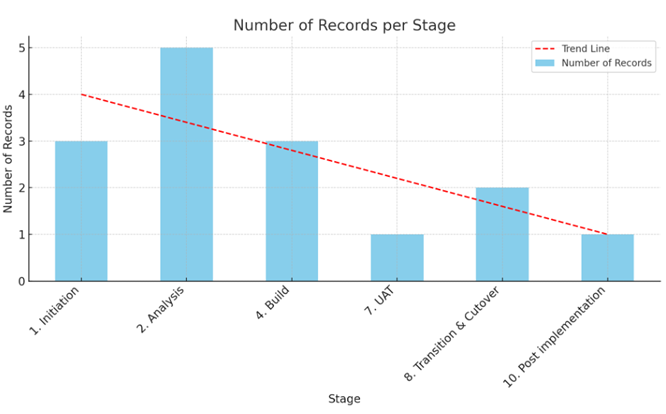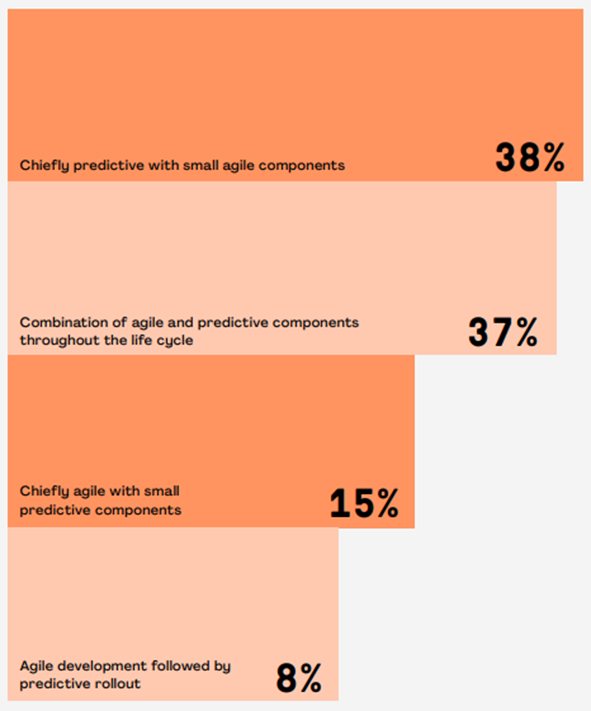Introduction
The relevance of technology transformation at scale in organizations is underscored by the increasingly competitive market, where entirely new products are emerging that did not exist a few years ago (e.g., exponential growth of marketplaces, neuro-networks with business implications, brand-new productivity tools, agile ecommerce services like Temu and Shein). This rapid evolution presents a significant challenge for businesses as they strive to maintain growth, operational effectiveness, and competitiveness. Companies are seeking ways to implement effective and rapid technological transformations that can leverage large volumes without disrupting business operations. However, implementing changes quickly may pose challenges due to the sheer scale of operations. Large businesses often struggle to seamlessly integrate new technologies, as transformation can be complex and time-consuming across both technology and organizational dimensions. Despite these difficulties, the pursuit of efficient and timely technological transformation is essential for maintaining a competitive edge in the modern market. Addressing these challenges can help companies adapt more smoothly, maintain operational effectiveness, and continue to thrive amid rapid technological advancements.
The value of technology transformations extends beyond businesses to society, customers, and consumers. For society, technological advancements often lead to job creation, improved services, and economic growth. Customers benefit from more innovative and efficient products that can enhance their quality of life. Consumers enjoy greater convenience, better product quality, and often lower prices due to increased efficiency and competition. Thus, the successful implementation of technological transformations at scale in industry not only helps businesses remain competitive but also drives broader societal progress and improves the overall consumer experience.
One of the primary benefits of technology transformation is enhanced operational efficiency and cost savings and cost avoidances. This efficiency gain can be achieved through various ways, as an examples:
- Core business technology simplification
- IT solutions licensing optimization
- Creative IT solutioning and software engineering tailored for specific business needs
- Real-time data analytics
- Global solutions deployments
A technology transformation initiative often targets revenue growth, cost reductions, and culture change, so it can significantly impact business performance and morale if it’s underdelivering or failing.
It requires a clear vision, a strong leadership, and a collaborative approach.
Challenges
According to Bain & Company [1] who completed comprehensive surveys of 300 large companies worldwide that had attempted technology transformations the findings highlighted two concerning trends – “Less failure, but not more success” and “An acceptance of mediocrity” you may see on the figure 1 that there’s no significant progress but rather progress of “compromise” in technology transformations in complex organizations over the last decade.

Fig. 1. Tendency for technology mediocre results over the last decade
One reason companies may struggle with implementing technology changes is not the absence of fit-for-purpose technology, but rather the adherence to traditional project management approaches such as Scrum/Agile or Waterfall. In reality, these methodologies can slow down project dynamics and require greater flexibility and adjustment, particularly in complex matrix environments where organizational and technological complexity are on the rise. In such scenarios, leadership, interpersonal skills, and management capabilities, coupled with a hands-on understanding of technology, become crucial ingredients.
Now, let's delve into a more detailed examination of a typical project structure for technology transformation.

Fig. 2
UK, European, and Japanese companies frequently outsource IT services to offshore locations such as India, Eastern Europe, or the Far East. Utilizing offshore teams has become an industry standard for service delivery, offering benefits such as cost efficiency, flexibility, and reduced administrative efforts. However, challenges persist in areas such as communication, engagement, and maintaining integrated control over delivery processes.
Typically, governance challenges for technology transformation projects unfolds across these three areas:
- Mobilisation of the teams – offshore, business users, key stakeholders
- Project engagements and communications
- Project Steering
Let's examine how these factors influence governance in technology transformation projects. Offshore (remote) teams typically necessitate more time for mobilization compared to in-house teams. This includes selecting resources, provisioning necessary toolsets and equipment, and providing training. A significant challenge arises from the independent operation of these teams, which can complicate rapid communication and potentially hinder productivity. Offshoring organizations often require extensive upfront documentation before work can commence, such as detailed specifications, action plans, approved access to IT systems, and provisioned infrastructure. These traditional approaches and planning methodologies tend to slow down delivery speed. Additionally, offshore teams may lack sufficient business understanding, which poses challenges for technology transformation projects requiring robust business user engagement, such as discovery, testing, and remediation activities.
Another challenge with offshore teams is the time it takes to fill roles with resources possessing the required skill set and level of expertise. It is advisable to personally interview key offshore roles to ensure the right resources are selected for critical positions. The hidden costs of offshoring may also be significant. According to Gartner [2], organisations with low product and portfolio management capabilities (PPM) may depend on the skills and abilities of key performers to get work done. It may also require expertise and resources provision from non-project related teams, including third-party vendors, to complement actual project resources.
Mobilisation challenges
Mobilizing business users, including various stakeholders such as markets, divisions, departments, and specific end users, necessitates a compelling financial savviness outlining the rationale for change and the benefits it brings to end users. This responsibility is typically not assigned to offshore teams due to its specific nature and the nuanced handling required in technology transformations. Offshore teams may facilitate meetings and organize follow-ups, but the ownership of delivering the message (including financial benefits from the charge) and ensuring its alignment with business goals typically rests with the project sponsor or in-house project/program manager.
Engagement challenges
Engaging key stakeholders requires purposeful interaction, avoiding unnecessary discussions that do not add value, and maintaining a clear focus on the transformation's value and the support needed. In many cases, key stakeholders such as the head of finance, head of IT, and head of architecture seek a certain level of detail from the project manager to gain confidence and understanding of the specifics. They also prefer project manager ensures broader alignment with other departments before engaging in discussions. Effectively convincing these key individuals of the objectives and expected outcomes often results in their full support and endorsement.
This challenge is particularly common in organizations with many business users that may be impacted by transformations. This could involve numerous end markets, divisions, regions, or business units, all of which must fully understand the change's purpose to secure their buy-in and specific support. In some cases, it may be necessary to engage directly with senior stakeholders from these departments or units to gather their buy-in and secure pre-agreed support from their respective teams.
Project steering challenges.
Typical project steering, illustrated in Figure 3, is divided into strategic (Steering Committee), tactical (portfolio alignment), and operational (drumbeat) components involving key teams. Steering challenges are inherent in complex organizations with intricate technology landscapes, requiring project managers to seamlessly integrate projects into the company's overall agenda and portfolio while considering all interdependencies and mitigating associated risks.
For instance, projects involving end-user testing must align testing periods with other projects' requirements due to limited business user capacity. Another challenge arises from various organizational change freeze periods, such as year-end closures, Sox freeze periods, or system blackouts during major upgrades like SAP ERP annual updates. Despite these planned activities, navigating a dynamic business environment demands managerial agility and resilience in providing regular updates and responding effectively to senior-level reporting requirements.

Fig. 3. Example of managerial steering meetings in technology transformations
Results analysis and discussion
The analysis of several transformation projects in the fields of integration, analytics, and CRM was conducted to identify patterns in governance that work well, require improvement, or do not work at all due to internal or external factors. The results from the analysis that I revealed can be organized by project stages, their impact, and the benefits of implementing the lessons learned. Figure 4 illustrates the distribution of insights discovered after technology transformation implementation, categorized with a clear trend line indicating a typical decline in lessons as projects approach the final stages. This decline occurs naturally as projects stabilize during execution, incorporate insights, and mitigate risks and issues as they progress towards their final goals.

Fig. 4. Distribution of insights per stage
Based on my findings from the abovementioned transformational projects, I would like to highlight the following five insights that are particularly significant and add value:
- Technology transformations require a solid bridge between delivery teams, stakeholders, and end users.
- Communicate early and ensure pre-alignment with all teams is established.
- Engaging business users is key to success.
- Don't chase perfection with offshore teams; instead, ensure agility by defining clear quality boundaries.
- Set tolerance for making mistakes as part of the learning and improvement process.
Now let’s examine above with more details.
Building a Solid Bridge Between Delivery Teams, Stakeholders, and End Users
Studies have shown that up to 70% of digital transformation projects fail, often due to a lack of alignment between the different parties involved [3]. To avoid becoming a part of this statistic, it is crucial to establish a solid bridge between delivery teams, stakeholders, and end users from the onset of the project.
According to a McKinsey study [4], in companies with engaged stakeholders the success rate is 1.7 to 3.1 times higher to achieve their transformation goals. Regular updates and involvement in key decisions can help maintain their commitment.
End users are the ultimate beneficiaries of any technology transformation. Their adoption and satisfaction determine the long-term success of the project. Incorporated User-Centric design (including project design) and users feedback into the design process can increase user satisfaction and adoption rates. Another scholar article suggest that user-centric designs can improve projects KPI, product adoption and CLV (customer lifetime value) [5, с. 22-29].
Building a solid bridge between delivery teams, stakeholders, and end users is not just beneficial but essential for the success of technology transformation projects. By ensuring strategic alignment, clear communication, and user-centric approaches, organizations can significantly enhance their chances of achieving their transformation goals and drive sustained business value via creation of required in-house expertise crucial for enterprise growth.
The Imperative of Early Communication
Research indicates that early and consistent communication is a critical factor in the success of transformation initiatives. According to a study by the Project Management Institute (PMI), dedicated communication channels are among top three enables for project performance rate [6, с. 25].
Ensuring Pre-Alignment Across Teams
Pre-alignment involves getting all teams, including delivery, stakeholders, and end users, to agree on the project scope, objectives, and execution strategy before the project formally begins. This preemptive alignment is crucial for a cohesive and coordinated effort.
Pre-alignment helps ensure that all teams share a unified vision and goals for the project. This unified approach fosters collaboration and reduces conflicts. A study by Harvard Business Review [7] found that collaboration has become a new business mandate as 72% employees in companies surveyed cited that effective communication is essential for organizations success.
Searching for excellence – hybrid approaches
Project Management Institute (PMI) research [8, с. 9] has revealed that there is no single right way to work (fig. 5), but at its core, way of working incorporates both predictive and agile approaches to provide the predictability, flexibility and agility that the project requires. The combination will depend on many variables, including the type of project based on the expected result (e.g., product, service, software, etc.), business environment characteristics, project team characteristics and many others. It will also depend on the industry sector, and the current standard framework or approach used in most projects of the company. Whether it is predominantly agile or predominantly predictive, a hybrid solution frequently enables project teams to best address the specific needs of the project.

Fig. 5. Patterns of approaches used by project managers
What kinds of tolerance are there on a technology transformation project?
Tolerances are crucial in technology transformations for ensuring effective operations. They provide the autonomy needed to make adjustments and maintain project momentum without constant oversight. Throughout my professional career, I've recognized that tolerances are essential to prevent being overwhelmed by operational activities and unnecessary micromanagement. They empower teams to make decisions within defined limits, thereby enhancing efficiency.
According to Elizabeth Harrin, a seasoned project manager with over 20 years of experience, tolerances enable swift adaptations to issues, helping to sustain project momentum [9]. This flexibility allows for quick adjustments to minor problems, preventing them from escalating. For example, while project sponsors have the final authority over major budget and schedule changes, establishing clear boundaries on what changes can be made without approval is possible. However, it remains crucial to keep sponsors informed even about minor changes to foster and maintain trust.
Furthermore, managing changes beyond tolerances requires a clear process to comply with internal and external standards. This includes documenting all changes, maintaining an audit trail, and assessing potential impacts on the project.
Some scholars have confirmed similar outcomes in different studies. For instance, Ezenwa, J.: Stakeholders Management in Project Environment [10]:
Many other fundamental aspects of stakeholder management such as identification, communication, engagement, prioritization, understanding and continuous consideration were among factors that could enhance collaboration and effectiveness (Meding et al, 2012).
According to Newcombe (2003) collaboration and relationships would aid the stakeholder management process. The alignment of goals, objectives and input from stakeholders were deemed to be critical towards achieving effective stakeholders Management. And while Stakeholder Management contains four processes that is Identification of Stakeholders, Plan Stakeholder Management, Manage Stakeholder and Control of Stakeholder Engagement
Communication Management in Project Teams: Practices and Patterns, Karolina Muszynska, University of Szczecin, Poland [11].
In another study on critical factors that contribute to the success of a project, the author lists ‘effective communication’ among the four most important factors, next to ‘top management support’, ‘clarity of purpose and goals’ and ‘stakeholders involvement’ (Ofori, 2013). Effective communication techniques and appropriate leadership styles are emphasized by Nguyen as the success factors for building and managing high performance global virtual teams (Nguyen, 2013).
Earlier research reports that 74% of the problems in distributed projects were caused by “Communication and contacts” (Komi‐Sirviö & Tihinen, 2005).
Below in Table, you will find a comprehensive list of insights I gathered and analyzed from my experience as a project manager for complex technology transformations. These insights and findings are not single source of truth, but rather a set of guiding principles and guardrails. They can assist project managers in adapting their project governance to enhance agility, resilience, alignment, and productivity in their work.
Table
Insights from technology transformations to consider for governance adjustment
| Category | Insights | Benefits |
| Business Continuity | Use pre-cutover weeks to address queries and align resources with external partners. | Reduced last-minute issues and enhanced readiness for cutover, ensuring a smoother transition. |
| Communication | Communicate clearly during pre-engagement. Emphasize what the change is about, its importance, and the benefits. | Improved stakeholder understanding and buy-in, ensuring alignment and support for transformation initiatives. |
| Communicate transformation progress regularly for transparency and support | Increased transparency and trust, keeping all stakeholders informed and engaged throughout the project. | |
| Provide timely communication and feedback for UAT | Faster identification and resolution of issues, ensuring a smoother and more effective user acceptance testing process. | |
| Discovery | Validate assumptions, scope, benefits, and support needs with technical teams. | Accurate planning and resource allocation, reducing risks and ensuring project success. |
| Analyze last miles, legacies and remediations needed | Improved compatibility and performance of new systems, ensuring seamless integration with existing infrastructure. | |
| Engagement | Split the value case into two parts: an executive summary and a detailed overview. | Clearer communication of goals and benefits, facilitating decision-making and gaining executive support. |
| Pre-engage key stakeholders before case approval. | Increased stakeholder commitment and reduced resistance during implementation. | |
| Create a clear engagement plan for stakeholder buy-in and support | Enhanced collaboration and support from stakeholders, ensuring successful transformation. | |
| Identify and engage cross-functional teams for support and communication | Better coordination and collaboration across departments, leading to a more efficient transformation process. | |
| Plan business users’ engagement and communication schedules for large scale changes | Consistent and effective communication, ensuring all markets are aligned and committed to the transformation. | |
| Hypercare | Ensure enough hypercare period with clear exit criterias | Smoother transition and reduced operational disruptions post-implementation. |
| Planning & Collaboration | Ensure delivery agility given the complexity of changes. | Faster implementation and adaptation to changes, maintaining project momentum and meeting deadlines. |
| Way of working | Adopt no business operation impact mindset | Minimization of operational disruptions, maintaining business continuity during the transformation. |
Conclusion
The insights from this research underscore the vital role of strategic planning, communication, and stakeholder engagement in the success of technology transformation projects. This article emphasizes that technology transformation goes beyond implementing new systems; it involves creating a robust framework that supports continuous improvement and adaptation, built on trust and transparency. The article presents critical insights derived from numerous leading technology transformations, organized by category. These insights can help readers enhance project governance and leverage the findings for better project outcomes.
Key Takeaways:
Business Continuity
Address queries and align resources during pre-cutover weeks to ensure a smooth transition, minimize last-minute issues, and maintain operational continuity.
Effective Communication
Clear communication during pre-engagement improves stakeholder buy-in and alignment. Regular updates and timely UAT feedback enhance transparency and issue resolution.
Thorough Discovery and Validation
Validate assumptions with technical teams for accurate planning and resource allocation, reducing risks and ensuring seamless system integration.
Strategic Engagement
Pre-engage key stakeholders and develop detailed engagement plans. Early involvement of cross-functional teams and consistent communication ensure alignment with transformation goals.
Comprehensive Hypercare
Provide an adequate hypercare period with clear exit criteria for a smooth post-implementation transition, reducing operational disruptions.
Adaptability and Agility
Focus on delivery agility and minimizing operational impact to enable faster implementation, adaptation to changes, and maintaining project momentum.
Understanding and implementing these key strategies can significantly improve the success rate of digital transformation projects. By prioritizing business continuity, effective communication, thorough discovery, strategic engagement, comprehensive hypercare, and adaptability, organizations can navigate the complexities of technology transformation more effectively. This research provides a roadmap for project managers and stakeholders to align their efforts, ensuring that technology transformations deliver their intended benefits and drive sustained business value.
The integration of these insights into your project governance will not only enhance project outcomes but also foster a culture of continuous improvement and resilience in the face of evolving technological challenges.

.png&w=640&q=75)